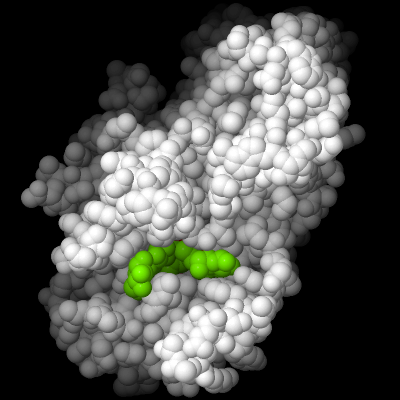Enzyme hydrolyzing starch, amylase is produced by the pancreas and salivary glands. It flows into the serum when these glands are the subject of a ductal obstruction or cell necrosis, then passes into the urine.
 Indications:
Indications:
Search of acute pancreatitis front abdominal pain, nausea and often with fever.
Sample:
Venous blood on dry or heparin tube (no oxalate, EDTA or citrate).
Careful not to contaminate the sample with saliva or sweat, which are rich in amylase.
Numerous drugs increase amylase. If possible, detailing the treatment followed by the patient to the laboratory.
Typical values:
From 10 to 45 U / L
The activity is low at birth; the adult values are achieved between 5 and 10 years.
Interpretation:
Hyperamylasémies salivary:
During mumps, bacterial infections, tumors or salivary gland stones, moderate increases in serum amylase is common.
Chronic alcoholism is also due to a modest increase (2-3 times normal) of salivary amylase.
Pancreatic Hyperamylasémies and painful abdominal syndromes:
The amylase is a good sign of acute pancreatitis provided to require high concentrations (at least 5 times the normal values). However, it is less specific than the hyperlipasemia (see Lipase) it is also preferable for the diagnosis of acute pancreatitis, to assay lipase.
Outside of pancreatitis, the amylase is observed in many painful abdominal syndromes – calculous migration through the papilla of Vater, perforated ulcer, mesenteric infarction, hemoperitoneum -, which reduces the value of this assay.
Wirsungography retrograde injection of opiates (Oddi spasm) also increased amylase.
The presence of amylase in pleural fluid is a good sign of pancreatic pleural effusion (almost always a false satellite pancreatic cyst).
Remarks:
• The increase in urinary amylase is parallel to that of amylase but with a delay from August to October pm; the determination of urinary amylase allows retrospectively detect a transient amylase.
• The urinary amylase remains normal or low in patients with renal failure, even when the high amylase.
• The macro-amylase is due to uptake of serum amylase by immunoglobulins. Amylase can not be filtered by the glomerulus and there is no urinary amylase. Unknown significance of this syndrome, which affects 0.5 to 2% of the general population.

You must be logged in to post a comment.